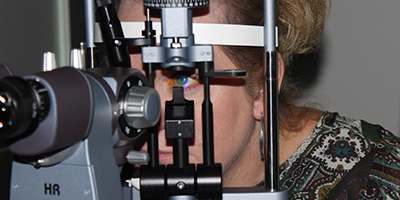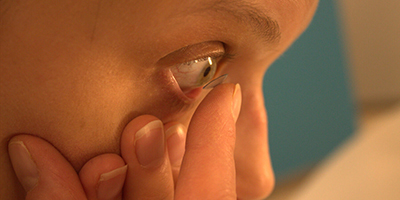
Is it the lens or the eye? Avoiding contact lens drop-outs
Is it the contact lens or ocular surface issues that are causing your patient to be uncomfortable in their contact lenses?
At times, lens materials and cleaning solutions can be altered to improve contact lens comfort/surface issues, but at other times it may be the ocular surface that is causing the problem. Lack of tears, incomplete blinks, and MGD are just a few of the issues that may be causing your patients contact lens intolerance. There are many treatments available to help prepare the eye for contact lenses and prevent drop out.
One way to capture these patients before introducing contact lenses is to consider a dry eye questionnaire at their initial exam. This allows you to discover potential dry eye patients and start treating early to ensure better introduction to the contact lenses.
Careful examination of the ocular surface using fluorescein (NaFl), measuring TBUT, examining the lids/lashes, meibomian glands, and setting expectations can help prepare your patients to be more successful with their lenses.
Dry Eye from a Lack of Tears
If your patient is not producing enough tears to lubricate the eye it is likely they will have complaints of poor comfort with their contact lenses. This type of dry eye is easily tested with a Schirmer’s test and measuring TBUT. These patients may benefit from increased use artificial tears, punctal plugs, prescription anti-inflammatory drops, or a biologic like Regener-Eyes® LITE.
Incomplete Blinks
We often see incomplete blinks from increased screen time or from long-term contact lens wear, and unfortunately, this is something that can get worse with time. Your patients may present with accelerated lens surface drying and lens surface deposits, especially inferior on the contact lenses. Hydra-PEG® coating may be a great addition for these patients’ lenses, but it is important to discuss screen time, remind them of the 20-20-20 rule and the benefits of blinking exercises. Since incomplete blinks become more common with contact lens wear, it is important to discuss this with all wearers, new and old.
Checking lid placement before introducing contact lenses can also set you up for success. Someone who has lagophthalmos most likely already suffers from dry and irritated eyes that may be worse in the morning (see Figure 1). When this occurs have them close their eyes to evaluate lid placement.

Low Quality Tears from MGD
Proactively treating the meibomian glands can increase the comfort of your contact lens patients (see Figure 2).
Left untreated, your patient may suffer from decreased wettability of their contacts due to lipid deposits. Gentle expression of the meibomian glands should be performed during their exam to see if treatment is needed.
Discuss proper lid hygiene early. This may include a warm compress, like the EyeLeve™ mask, which can increase contact lens wearing time by up to three hours daily, lid scrubs and daily omega -3 fatty acids. An in-office treatment, like the VibrantVue® gel, can jump start your patient’s treatment with its anti-inflammatory effects.
Getting ahead of any ocular surface issues can greatly improve the success of your contact lens patients. Setting expectations and creating a lid hygiene routine early can make the transition to the lenses a much better experience.




